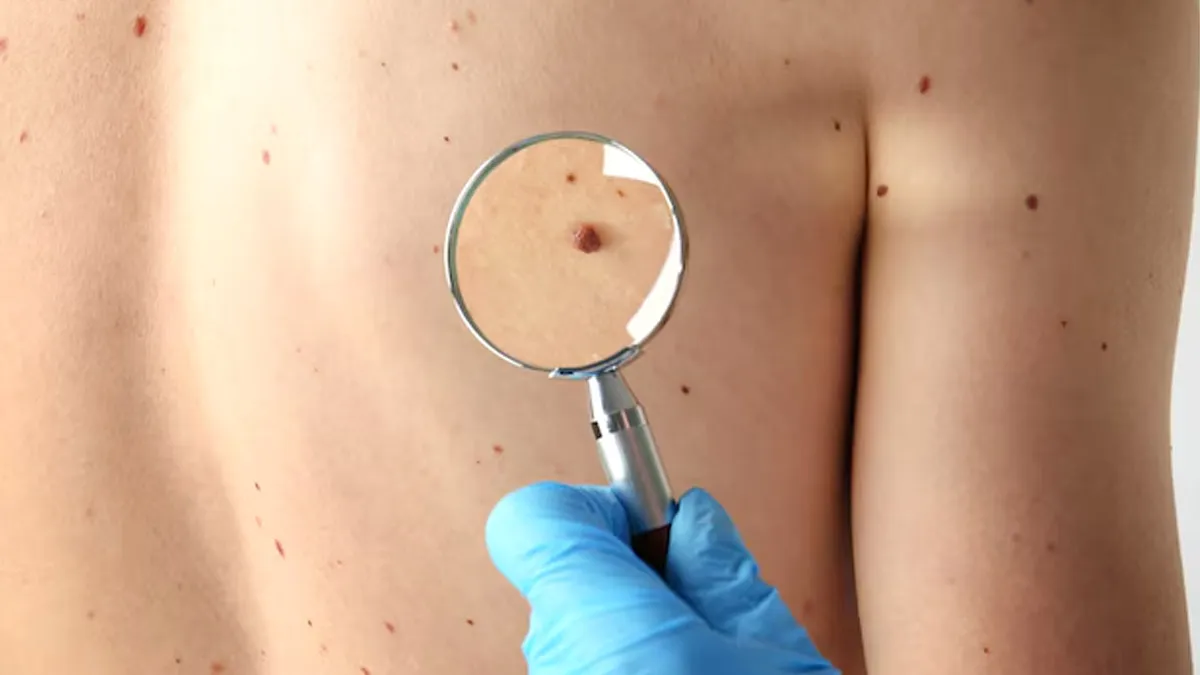
A mole or a birthmark are natural occurrences on the skin that cannot be avoided or prevented. While mostly benign and harmless, it is still important to differentiate between the two and watch out for signs that indicate something more serious.
Table of Content:-
In an interaction with the OnlyMyHealth team, Dr Navjot Arora, Consultant Dermatologist, Dermaheal Skin and Clinic, Dwarka, New Delhi, deep dives into the origin of moles and birthmarks and shares distinct characteristics of each that help differentiate between the two.
Also Read: Unusual Moles: The ABCDE Rule for Spotting Skin Cancer Early
Differences Between Moles And Birthmarks

Dr Arora describes a mole, also known as a melanocytic nevus, as a cluster of pigment-producing cells that often appears as a small, dark brown spot. Moles can be flat or raised, round or oval, and sometimes grow hair.
In contrast, birthmarks are skin discolourations present at birth or shortly after. “Birthmarks can be red, pink, brown, or even bluish in colour, and they may cover larger areas of skin,” he explains.
Unlike moles, most birthmarks are not made of pigment-producing cells but are due to blood vessel overgrowth or irregular distribution of skin pigment.
Why Is It Important To Distinguish Between Moles And Birthmarks?

According to Dr Arora, monitoring changes in moles and birthmarks is crucial because moles, in particular, can sometimes develop into melanoma, a dangerous type of skin cancer.
According to the World Health Organization's (WHO) International Agency for Research on Cancer (IARC), in 2022, an estimated 3.3 lakh new cases of melanoma were diagnosed worldwide, and almost 60,000 people died from the disease. In general, skin cancers are the most common group of cancers diagnosed worldwide, with more than 10.5 lakh new cases estimated in 2022.
Dr Arora highlights, “A mole that changes in size, shape, or colour can signal abnormal cell growth. Birthmarks, though usually harmless, can occasionally cause cosmetic or medical concerns if they grow or bleed.”
“Keeping track of any alterations over time helps in detecting potential problems early.
Patients are often advised to use the ‘ABCDE rule’ for moles – looking for Asymmetry, Border irregularity, Colour variation, Diameter larger than 6 mm, and Evolving changes,” he explains.
Also Read: Are Freckles Just Beauty Marks Or Signs Of Deeper Skin Health Issues?
How To Know If A Mole Or A Birthmark Is Cancer-Related

Generally, the risk of cancer is primarily associated with moles rather than birthmarks, according to Dr Arora. “Most birthmarks, such as port-wine stains or café-au-lait spots, are benign and remain stable throughout life.”
However, certain types of birthmarks, like large congenital melanocytic nevi, carry a slightly higher risk of becoming cancerous over time because they contain melanocytes (the same pigment cells found in moles).
One should be aware of the warning signs that prompt immediate evaluation. These include:
- If a mole or birthmark starts to itch, bleed, become painful, or change noticeably in colour or size, it should be assessed by a dermatologist.
- A mole with uneven edges, multiple shades of brown or black, or one that looks significantly different from other moles (the ‘ugly duckling’ sign) is concerning.
- Sudden changes in thickness, colour, or the development of sores on birthmarks should also raise concern.
- Prompt medical attention ensures timely detection of skin cancers or other underlying conditions.
Treatment Options
If you suspect skin cancer, it is important to consult a dermatologist, who may perform a biopsy, where a small portion or the entire mole is removed and examined under a microscope.
Harmless moles can also be removed for cosmetic reasons through lasers or surgical excision or shaving techniques. Birthmarks are usually left untreated unless they cause health issues or aesthetic concerns.
Options for treating birthmarks include laser therapy or surgical removal, depending on the type and size. For example, vascular birthmarks like port-wine stains often respond well to laser treatment.
Conclusion
Moles and birthmarks are common and usually harmless. However, it is crucial to distinguish between the two and monitor changes, as sometimes, they can indicate more serious conditions like skin cancer. If certain changes on the skin seem suspicious, it is always advised to consult a dermatologist.
Also watch this video
How we keep this article up to date:
We work with experts and keep a close eye on the latest in health and wellness. Whenever there is a new research or helpful information, we update our articles with accurate and useful advice.
Current Version
